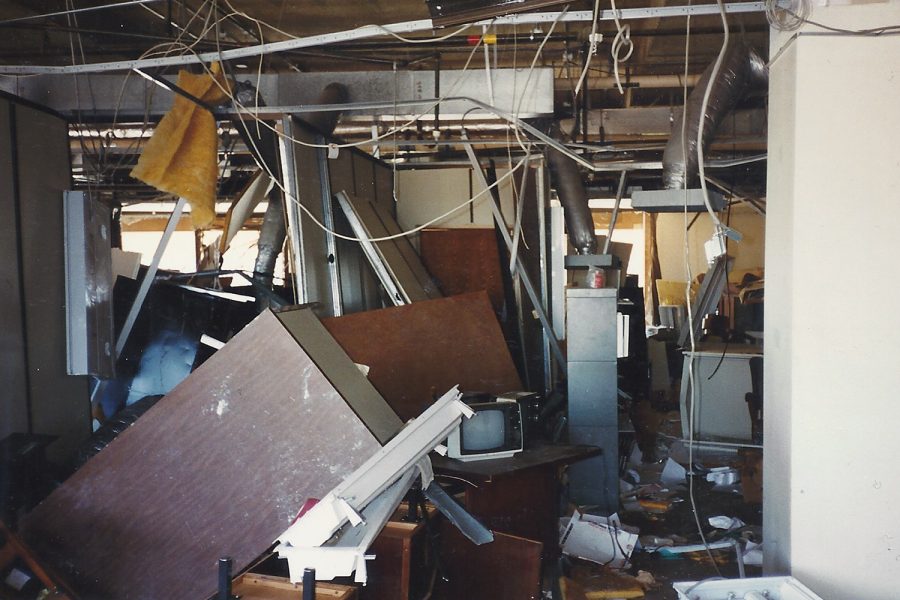Convicting Timothy McVeigh
April 18, 2020
The remnants of an office inside the Alfred P. Murrah Federal Building cover a section from floor to ceiling in the weeks following a bombing. The building was nine floors in height and housed several government agencies along with a day care center on the second floor.
Waters told me he could recall working late the night before the bombing. He left the Murrah building around 9 p.m. and saw a pair of strange men staking it out. They looked like hitmen, Waters said.
“It really creeped me out,” he said. “And it was a stare-down as I’m pulling out of the parking garage. I drove by, got their license plate, wrote it down, and called it in.”
Waters didn’t know it then, but one of those men staking out the building was Timothy McVeigh.
Just under two hours after the explosion April 19, an Oklahoma state trooper stopped McVeigh for driving without a license plate about 80 miles north of the city and arrested him for carrying a concealed weapon, according to the FBI website.
Jim “Buzz” Crist, a retired ATF special agent and one of four who worked the case with the FBI, said remnants of the Ryder truck that held the bomb led investigators to the man that had rented the vehicle out, who then gave them composite drawings of two suspects, one being McVeigh.
When they found McVeigh already in jail, Crist said his clothes were tested by an FBI lab that found traces of ammonium nitrate — a key ingredient in the 4,800-pound bomb.
An Oklahoma judge ruled after one year that, because of conspiracy theories running rampant in the state, McVeigh would not be able to receive a fair trial. The trial thus moved to Denver, Colorado, where Crist and his fellow agents worked the case two more years before McVeigh was found guilty and sentenced to the death penalty.
Crist worked with 100,000 pieces of evidence to convict McVeigh and his co-conspirators, Terry Nichols and Michael Fortier. Nichols, who helped mix and make the bomb, was sentenced to life in prison. Fortier, who Crist said was aware of the plot but neglected to report it to authorities, got 12 years, according to the Oklahoma Historical Society.
A former soldier that Crist said “went off the deep end” after failing to pass special-forces school, McVeigh was very anti-government. A government raid of the Branch-Davidian religious sect in Waco, Texas motivated the 27-year-old’s target of the Murrah building — where a few ATF agents who had participated in the raid worked. The standoff at Waco occurred April 19, 1993.
When Crist first saw McVeigh, he said he looked less like a villain in person than he did on television. He looked like a kid — a young soldier.
“He was a decorated war hero,” Crist said. “He was an outstanding soldier until he couldn’t get through green-beret school… I guarantee he always felt like he was the smartest in the room.”
For a month after the bombing, Waters didn’t remember seeing McVeigh that night before the attack. It wasn’t until the FBI routinely questioned DEA personnel about McVeigh that Waters said a light bulb came on in his head. The man who had been with McVeigh that night before the bombing was never identified.
The incident bothered Waters so much, he said he sought help with psychologists.
“I was in a bad place, because at that point I’ve got survivor’s guilt, and I’ve got the guilt of not doing anything to perhaps prevent it, having seen McVeigh and the other guy staking out the building,” Waters said. “And that’s coupled with how I didn’t even remember it for like a month.”
